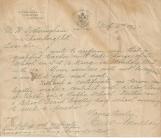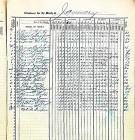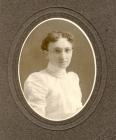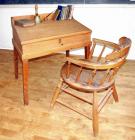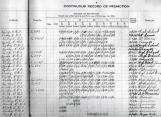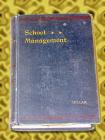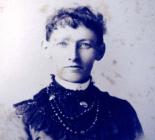1
The men and women who chose to teach in these one-room schools were exceptional people. Not only did these teachers take on class sizes that could range from 10 to 80 or more, students could be younger than 5 and others over 18 years of age. All subjects were part of their every day curriculum; from basics skills to advanced academic subjects and art, music, and sport, prepared them for higher education, including University. In fact, one of our teachers taught a young lad from Laskay who went on to teach for 41 years in the Kinghorn school.6
One such teacher, Alice Ferguson lived on her parent's farm on the 3rd Concession in King Township for her whole life (1874 - 1954). As well as teaching, Alice was a charter member of the Women's Institute and was honourary President of the Temperance Branch. She had a genuine love and concern for children and loved to write. During her lifetime she wrote many individual poems, a book of nursery rhymes, which was published in 1936 called "Nonsense Rhymes" and a book about school life in early King Township titled "Yesterday and Today for Tomorrow".8
All subjects where taught to all grades with emphasis on the 3 "Rs" (reading, 'riting, and 'rithmatic") as well as subjects that prepared students for higher education, including University. In her book "Yesterday and Today for Tomorrow", referencing classes c 1849, Alice Ferguson wrote "the teacher sat at his desk and "heard" classes. While the majority of students received a mere rudimentary education, usually a 'star scholar' would gain distinction and enter the larger world to be a credit to the community and teacher".9
Alice Ferguson also wrote, describing the interior of early schools: "the school houses were small log structures with the desks along the wall, and faced by the backless bench on which sat the pupils, from mere infants to mustached young men, or girls in long skirts."11
Registers were not only used to record the attendance and absences of the students, but also listed provincial requirements to be followed by the teachers. These included Religious and Moral Instruction. "Every Public School shall be opened with the reading of the Scripture and repeating of the Lord's Prayer and shall be closed with a prayer" Ontario Department of Education.Teachers were also to direct their students to the Bird Protection Act 1918, as certian actions could be injurious to agricultural or other interests in a particular community.
